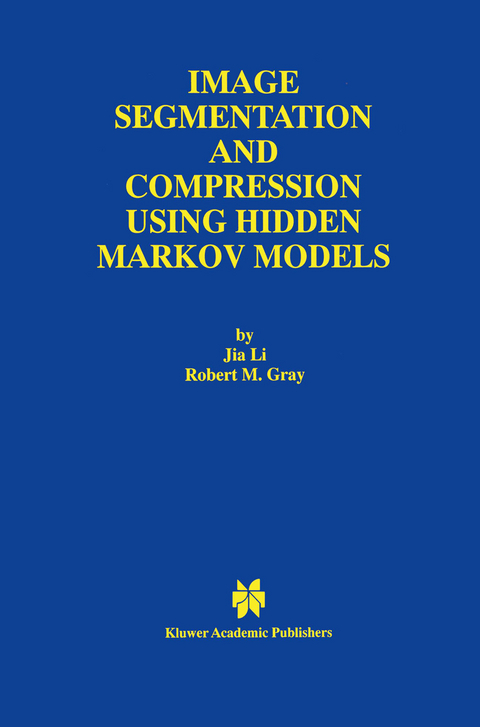
Image Segmentation and Compression Using Hidden Markov Models
Springer-Verlag New York Inc.
9781461370277 (ISBN)
Image segmentation is a process for dividing an image into its constituent parts. For block-based segmentation using statistical classification, an image is divided into blocks and a feature vector is formed for each block by grouping statistics of its pixel intensities. Conventional block-based segmentation algorithms classify each block separately, assuming independence of feature vectors.
Image Segmentation and Compression Using Hidden Markov Models presents a new algorithm that models the statistical dependence among image blocks by two dimensional hidden Markov models (HMMs). Formulas for estimating the model according to the maximum likelihood criterion are derived from the EM algorithm. To segment an image, optimal classes are searched jointly for all the blocks by the maximum a posteriori (MAP) rule. The 2-D HMM is extended to multiresolution so that more context information is exploited in classification and fast progressive segmentation schemes can be formed naturally.
The second issue addressed in the book is the design of joint compression and classification systems using the 2-D HMM and vector quantization. A classifier designed with the side goal of good compression often outperforms one aimed solely at classification because overfitting to training data is suppressed by vector quantization.
Image Segmentation and Compression Using Hidden Markov Models is an essential reference source for researchers and engineers working in statistical signal processing or image processing, especially those who are interested in hidden Markov models. It is also of value to those working on statistical modeling.
1. Introduction.- 1.1 Image Segmentation and Compression.- 1.2 Overview.- 2. Statistical Classification.- 2.1 Bayes Optimal Classification.- 2.2 Algorithms.- 2.3 Markov Random Fields.- 2.4 Markov Mesh.- 2.5 Multiresolution Image Classification.- 3. Vector Quantization.- 3.1 Introduction.- 3.2 Transform VQ.- 3.3 VQ as a Clustering Method.- 3.4 Bayes Vector Quantization.- 4 Two Dimensional Hidden Markov Model.- 4.1 Background.- 4.2 Viterbi Training.- 4.3 Previous Work on 2-D HMM.- 4.4 Outline of the Algorithm.- 4.5 Assumptions of 2-D HMM.- 4.6 Markovian Properties.- 4.7 Parameter Estimation.- 4.8 Computational Complexity.- 4.9 Variable-state Viterbi Algorithm.- 4.10 Intra- and Inter-block Features.- 4.11 Aerial Image Segmentation.- 4.12 Document Image Segmentation.- 5. 2-D Multiresolution Hmm.- 5.1 Basic Assumptions of 2-D MHMM.- 5.2 Related Work.- 5.3 The Algorithm.- 5.4 Fast Algorithms.- 5.5 Comparison of Complexity with 2-D HMM.- 5.6 Experiments.- 6. Testing Models.- 6.1 Hypothesis Testing.- 6.2 Test of Normality.- 6.3 Test of the Markovian Assumption.- 7. Joint Compression and Classification.- 7.1 Distortion Measure.- 7.2 Optimality Properties and the Algorithm.- 7.3 Initial Codebook.- 7.4 Optimal Encoding.- 7.5 Examples.- 7.6 Progressive Compression and Classification.- 8. Conclusions.- 8.1 Summary.- 8.2 Future Work.
| Erscheint lt. Verlag | 3.10.2012 |
|---|---|
| Reihe/Serie | The Springer International Series in Engineering and Computer Science ; 571 |
| Zusatzinfo | XIII, 141 p. |
| Verlagsort | New York, NY |
| Sprache | englisch |
| Maße | 155 x 235 mm |
| Themenwelt | Informatik ► Grafik / Design ► Digitale Bildverarbeitung |
| Mathematik / Informatik ► Informatik ► Software Entwicklung | |
| Informatik ► Theorie / Studium ► Künstliche Intelligenz / Robotik | |
| Technik ► Elektrotechnik / Energietechnik | |
| ISBN-13 | 9781461370277 / 9781461370277 |
| Zustand | Neuware |
| Informationen gemäß Produktsicherheitsverordnung (GPSR) | |
| Haben Sie eine Frage zum Produkt? |
aus dem Bereich


